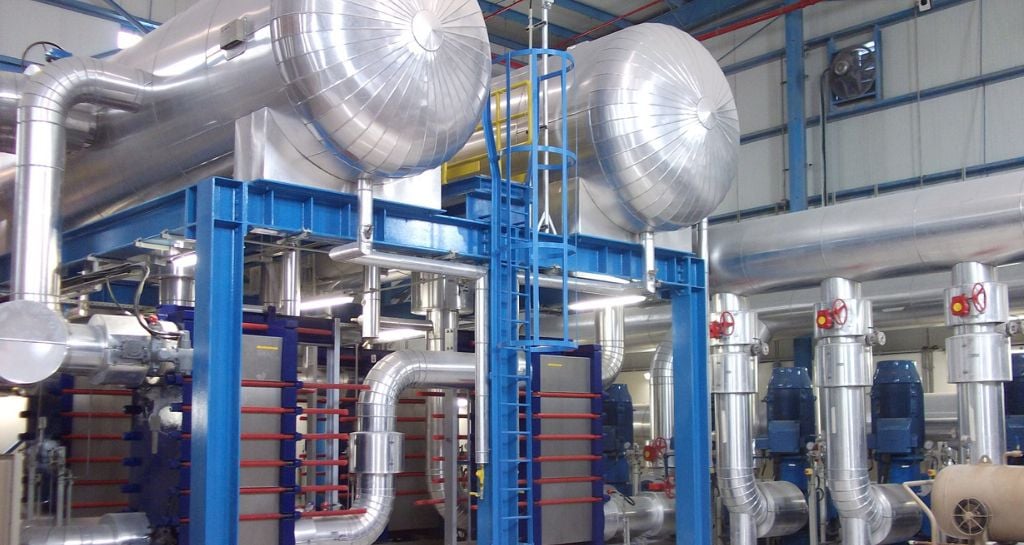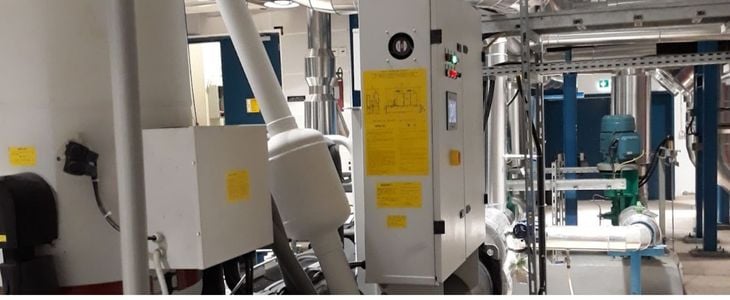Recent years have seen a relentless search for a transition towards sustainability in heating. As such, the incorporation of the right renewable heating system stands at the center of many of these efforts.
Today, more and more projects have been successfully incorporating seawater as a source for heat pumps. As 5th Generation District Heating and advanced industrial heat pumps open the door to using energy sources which used to be not considered as valid (because being considered as “low grade”), the incorporation of renewable and locally-available energy sources is becoming a successful option. This includes the use of seawater, industrial excess heat, and gas, as well as sewage water, rivers and lakes.
In this context, employing seawater heat pumps represents one of the most important efforts in achieving maximum efficiency in certain renewable heating system models in the race to achieve sustainability and decarbonization.
Let’s take a look at current sea water / heat pump configurations and their advantages.
The need of renewable heating system models
Energy efficiency remains a main area of interest for all players today, including governmental institutions, citizens and private operators and enablers. In fact, heating is today the largest energy end-use at a global scale, accounting for almost half of the total energy consumption worldwide.
A number of legislations around the globe are in fact pushing and rewarding all efforts aiming at generating a reliable renewable heating system, including the Renewable Heat Incentive (RHI) in the UK, the Renewable Energy Directive (RED II) in the EU or the Clean Heat Grant in the US.
While most systems until today have involved the burning of fossil fuels (with the ensuing air pollution and harmful emissions), the efforts towards achieving a successful renewable heating system are seeing fruitful endeavors in crucial areas such as industrial decarbonization.
The role of district heating mustn’t be underestimated in this context. This includes the generation of heat in a centralized location which is then distributed through a pipe system. The fact is that traditional district heating has involved the use of fossil fuels (and most models today still rely on these). However, the possibility of incorporating renewable energy sources is pushing these systems to the front of the most auspicious global efforts towards decarbonization and renewable heating systems today.
This is particularly true when 5th Generation district heating efforts are paired up with efficient industrial heat pumps.
As such, current leading district heating systems are able to work with temperatures that are close to ground temperatures (at around 50Cº instead of around 80Cº).
This not only opens the door to the use of sustainable, renewable heating: it also helps in minimizing heat losses and the economic costs related to heating, especially relevant in a context of constantly-fluctuating costs.

Seawater source for heat pump: how does it work
First, let’s have a look at the working principle of heat pumps: these mechanical devices are in charge of transferring heat from a low-temperature source to a high-temperature source via the use of an external energy source.
In the case of seawater source heat pumps, the heat source is seawater, and the process can be described in the following steps:
- Water is drawn from the ocean and into the heat pump’s evaporator. This is done through an intake pipe.
- Seawater passes through the evaporator heat exchanger, transferring its thermal energy to a refrigerant fluid and evaporating the same.
- The rest of the process is similar to any water to water heat pump’s refrigeration cycle: the gas refrigerant after the evaporator is compressed further in order to further raise its temperature.
- A hot gas flows to the condenser heat exchanger where heat energy is transferred to the heat sink..
But why seawater? The main reason for employing seawater as an energy source is that the sea typically enjoys more stable temperatures (at particular depths) throughout the year than the air in the same period
While each project will need to assess the location’s particular needs and challenges in terms of external temperatures, there are a number of very successful sea water heat pump projects that have been developed in recent times. This includes Monaco’s efforts, which date back to the 1960s; and other power plants in several Nordic communities.
The advantages of seawater source heat pump
- Stable temperatures: seawater at certain strategic depths presents relatively stable temperatures throughout the year, meaning it is an ideal heat source for heat pumps to operate more efficiently to maintain desired temperatures.
- Renewable and abundant: seawater can be considered a renewable resource, as its responsible use doesn’t involve the depletion of natural resources. Depending on the location, seawater is also abundant and readily available.
- Emission-free: sea heat pumps don’t emit any harmful gasses or pollutants, effectively reducing carbon emissions and the environmental impact of traditional heating systems.
- Cost-effective: while initial investments for seawater heat pumps can be higher than other options, they remain a cost-effective investment in the long run, as they use less energy to operate and their increased efficiency results in lower energy bills and reduced maintenance costs.
- Versatile: seawater heat pumps are adequate for multiple applications, such as heating and cooling for residential and commercial buildings, as well as industrial environments.

The opportunities of the sea water heat pump
As we’ve seen throughout the article, many projects seeking to develop a renewable heating system will find a reliable and efficient option in the inclusion of sea water heat pumps. However, devising the right system must necessarily involve a team of professionals able to look at all available options to optimize opportunities.
There are a number of research endeavors confirming the unmatched opportunities that seawater heat pumps represent. For instance, an article focusing on heat pump Coefficient of Performance (COP) in heating operations of seawater sources found the performance of equipment had an average of 24.2% energy efficiency enhancement potential of the heat pump units.
Additionally, other research efforts have focused on looking at the combined operation of renewable energy and seawater desalination equipment. In this case, the paper looks at the case of a CCHP system that includes wind turbine, photovoltaic, combined heating and power (CHP) and seawater desalination, representing yet another use case of how seawater might be included in the development of a renewable heating system. While looking at the economical and environmental benefits of this type of system, the paper considers the potential optimization of the electric cooling ratio and the capacity of critical equipment by considering capital cost, operation cost and maintenance cost, energy cost and equivalent carbon tax. The result verifies the viability of this suggestion and operation strategies, confirming cost and CO2 emissions would be reduced.
Want to learn more about current possibilities to generate a renewable heating system that involves the use of sea water heat pumps? At Araner, we can help you. As part of our work in developing district heating initiatives, we’re at the forefront of providing operators with efficient and sustainable models based on renewable heating energy and 5th Generation District Heating and Cooling Systems.
As such, we’ve been involved in the development of successful sea water heat pump models, pushing the boundaries of emission-free, sustainable and cost-efficient heating systems for our clients.
Download our free reference ebook about District Heating or our free heat pump technical guide to get inspired or get in touch with us to speak directly to our team and find out how we can help you.










